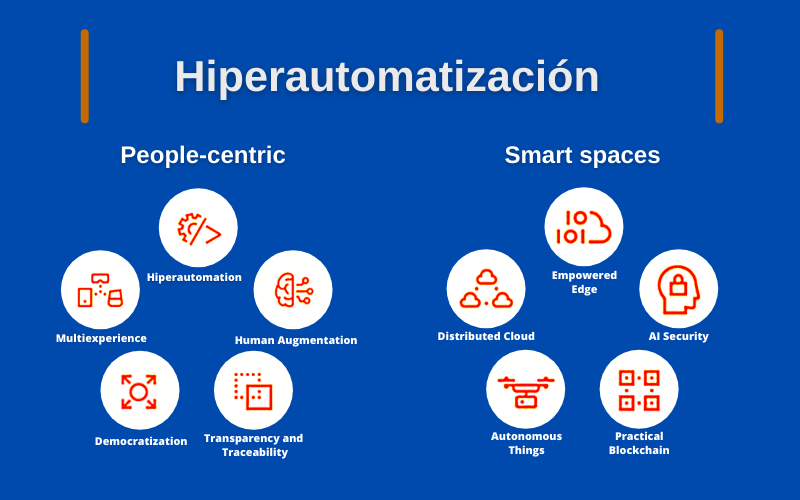
20 Nov Does my company need hyperautomation to achieve success?
A couple of years ago, the focus was on digitalizing companies to enhance productivity by leveraging data. Adopting cloud solutions—whether public, private, or hybrid—captured, and continues to capture, the attention of CIOs and even CEOs of modern businesses. Today, however, the compass points toward hyperautomation, which is one of the top 10 strategic technology trends for the coming years, according to Gartner, the leading technology analysis consultancy in the world.
The boom in hyperautomation is driven by its ability to address some of the major challenges organizations face this decade, such as managing volatile demands and transforming business models for the new digital landscape. If you’re wondering whether your company needs it, here’s a concise overview of what you should know.
What Is Hyperautomation?
Hyperautomation is a revolution that arises from the convergence of advanced technologies like artificial intelligence and robotics to automate processes and enhance human capabilities. Its primary goal is to minimize human intervention in processes while improving control and visibility to understand what is happening at any given moment.
Hyperautomation requires various technological components, such as:
- Capture and digitisation of data from different sources and documents. It is responsible for extracting data from documents and images such as an invoice or a report, to be used in different company processes.
- Workflow management to design, execute and monitor business processes. Even without the need for code for non-technical users to transform their processes.
- Intelligent decision automation, a tool to analyse, automate and control business decisions based on rules. You can authorise a loan, decide on promotional offers or detect a cross-selling opportunity with high precision and personalisation.
- Robotic process automation, a technology that can include robots or virtual workers in business processes, which will automatically perform those high-volume, routine, transactional and repetitive tasks that were previously carried out manually by users. It uses pre-built logical rules to deliver results.
- Cognitive technologies such as chatbots, machine learning and natural language processing to take automation a step further by incorporating the full capabilities of artificial intelligence.
Advantages of Hyperautomation
The main benefits that hyperautomation brings to organizations include:
- Process Efficiency
- Cost Reduction
- More Strategic Outcomes
According to the IBM Intelligence Automation 2020 study, companies that invest in hyperautomation can expect savings of up to 30%. However, only 7% have initiated large-scale automation initiatives.
Where Does Your Organization Stand?
Do you know which side your organization is on? Would you like a free consultation to turn your company into a sector leader? Request it for free!



